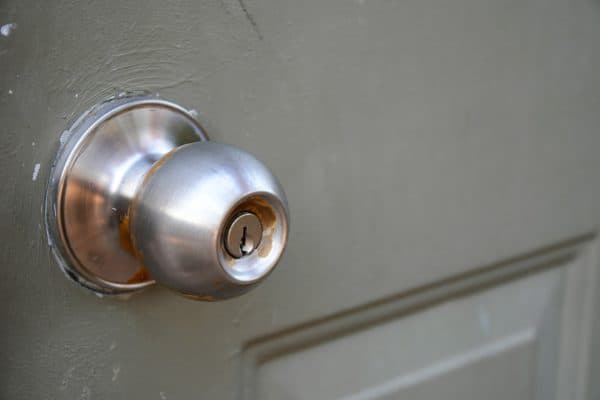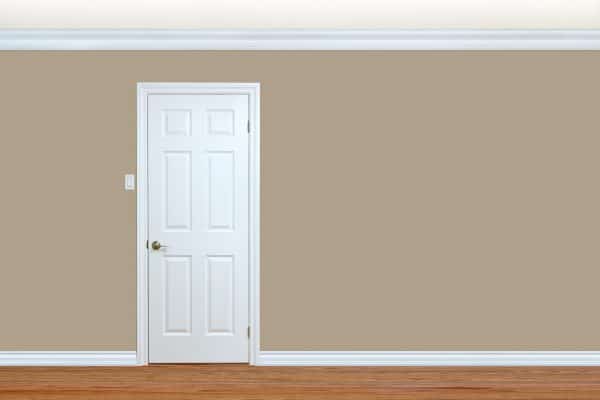Weatherstripping is one of the most important things that you can do to improve the energy efficiency of your home. Perhaps you've wondered if you need some kind of special glue to hold weatherstripping in place. We have researched this question and the answer is right here.
The best weatherstripping glue for rubber-based weatherstripping is 3M Black Super Weatherstrip and Gasket Adhesive. Typically, you don't actually need any glue when weatherstripping doors in your home, unless you're weatherstripping your door with rubber.
This is because most weatherstripping tapes for doors are self-adhesive, and applying glue to them will render the adhesive backing of the tapes useless.
Weatherstripping may seem like a lot of work, but it is easy to install and can help you save money, especially during winter. Keep reading to learn more about the types of weatherstripping and the best practices to observe when weatherstripping your doors.
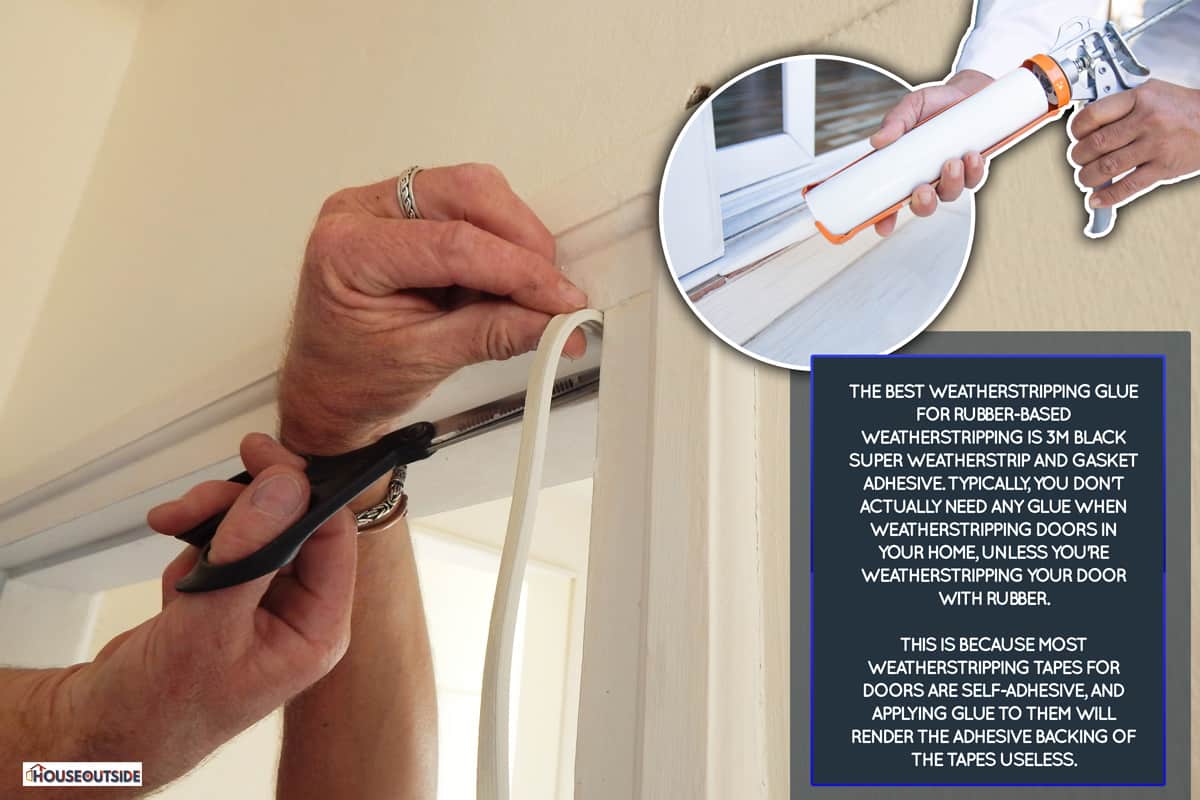
Why Should You Weatherstrip Your Doors At Home?
Weatherstripping is a good idea if you live in an area with extreme weather conditions. It helps seal the gap between your door and its frame to reduce air leaks and noise and keep the temperature.
Homeowners in colder climates should weatherstrip not only their doors but windows too to prevent heat loss. When you think about heat loss in the winter, you think about heat leaking and escaping through the openings in your home.
Heat loss causes your home's heating system to work harder than it should. You will understand why heat loss is costly when you add that to your electric bill.
Furthermore, if you live in a warmer climate, weatherstripping can help optimize your air conditioning system by keeping warm and dry air from coming in.
Either way, weatherstripping improves the energy efficiency of your heating and air conditioning systems, saving you money.
Weatherstripping can also help prevent pests such as spiders and insects from entering through the gap between the door hinges and the jambs.
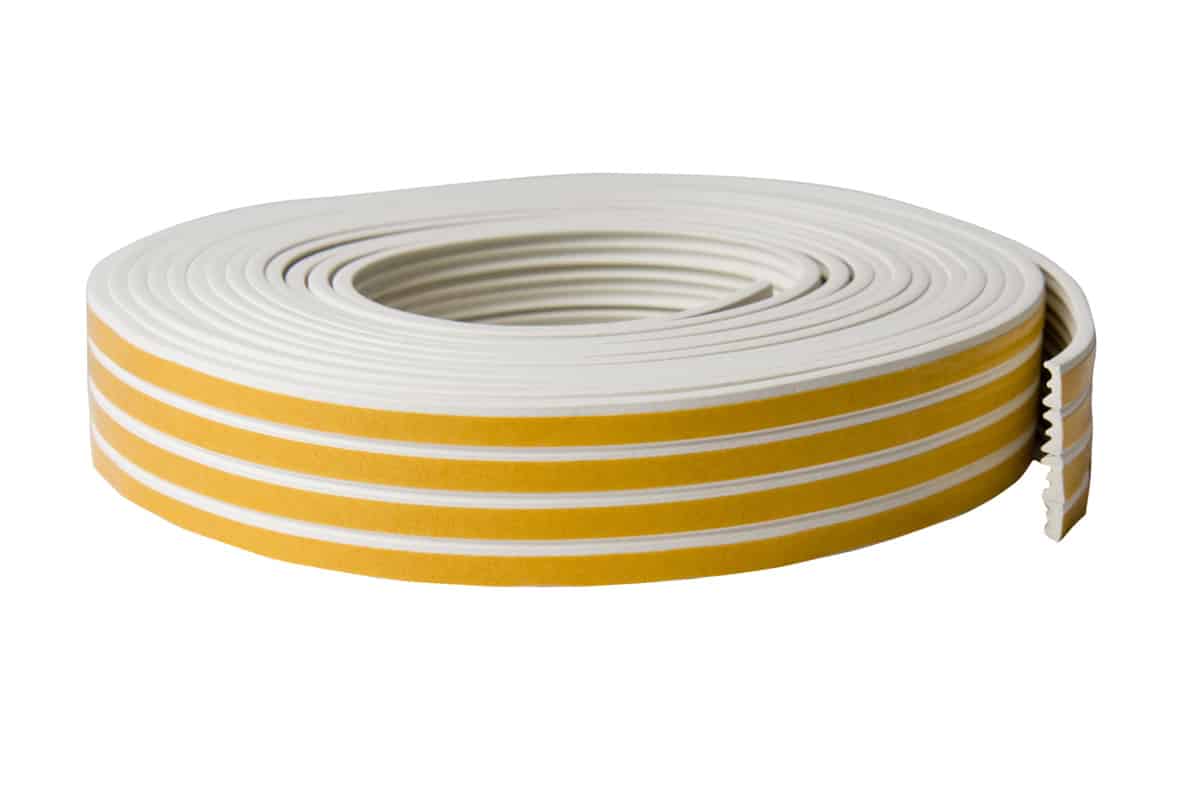
Types Of Door Weatherstripping
Have you ever wondered what kind of weatherstripping should be on your doors? When you think of weatherstripping, you might picture the thick, heavy metal strips that you put on your windows and doors to seal them.
However, there are a few different types of weatherstripping and they serve the same purpose. Let us get to know each of them and learn their similarities and differences if any.
1. Compression Weatherstripping
Compression weatherstripping is a type of seal used on window sashes and swinging doors that allows for a tight fit to prevent air from leaking through the seams.
The airtight seal is made possible when the flexible vinyl bulb comes in contact with the door upon closing. This causes the vinyl to expand and compress against the door frame, creating an airtight pressure.
The base material to which the vinyl bulb is attached may be made of wood or aluminum. It is fastened to the door frame to ensure that the vinyl bulb is snugged.
When Should You Use Compression Weatherstripping?
A common problem that homeowners often face is the leak in the weatherstripping of the door. This problem is a result of substandard weatherstripping which fails to seal seams and small gaps between door frames.
With the right application and installation, compression weatherstripping can be the most reliable weatherstripping you can use to seal your door.
This is because the base material ensures that the entire vinyl bulb is installed snugly along the entire perimeter of the door frame.
If you're looking for a long-term solution to your door weatherstripping issues, then compression weatherstripping may be the best option for you.
2. V-type Weatherstripping
V-type weatherstripping is made of flexible rubber with high-density foam that can be cut to any length. It can also be made of vinyl or bronze.
When Should You Use V-Type Weatherstripping?
The v-shape will allow you to fit it snugly on double-hung and sliding windows. It can also be used on the sides of the door, according to the U.S. Department of Energy.
Check out this V-type rubber weatherstripping on Amazon.
When using v-type weatherstripping that is made of rubber, you may want to glue it along the edges of the door to ensure a good and tight seal.
Check out this weatherstrip glue on Amazon.
3. Foam Weatherstripping
Foam weatherstripping with adhesive backing is the most popular choice for many homeowners. While this type of weatherstripping has a shorter lifespan than other types, it offers several advantages when it comes to convenience over other products.
- First, it's easy to apply. You just peel the backing off of the foam, place it where you need it, and stick it to the surface. There's no complicated installation process involved.
- Second, it's affordable. Weatherstripping is a cheap way of optimizing your heating and HVAC systems, but this type is cheaper than others.
- Third, it's fairly durable. It won't crack or fall apart after a few years. It may not be as durable as compression weatherstripping but it's all worth it since there's no nailing or screwing and cutting of materials involved.
It's also easier to maintain than other types of weatherstripping.
When Should You Use Foam Weatherstripping?
If you don't have the luxury of time to do some DIY at home and you don't want to pay someone to do the weatherstripping for you, you can use foam weatherstripping as the fastest way to get your door insulated.
Check out this foam weatherstripping on Amazon.
The video below summarizes what we have discussed here:
How To Weatherstrip Doors
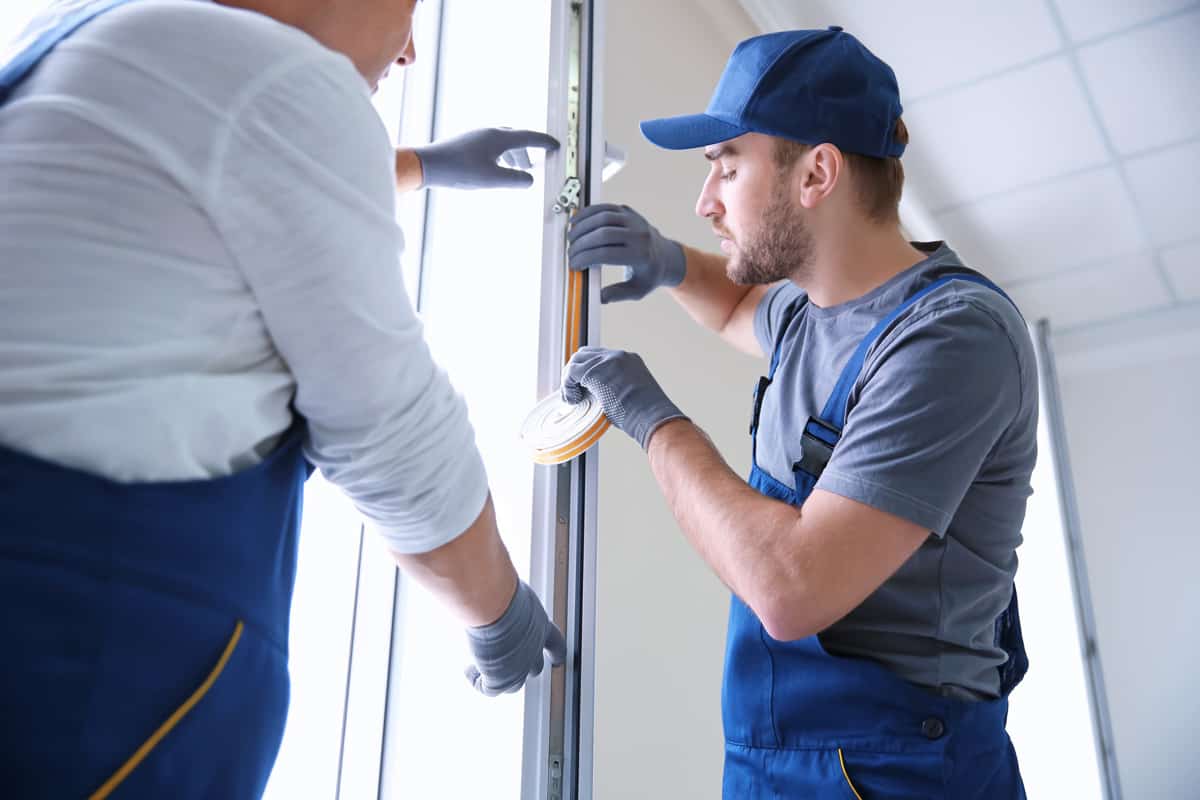
Door weatherstripping is a necessity for your door and should be replaced after a few years. The best part about door weatherstripping is that they are simple to install and maintain. Here are the basic steps for installing door weatherstripping:
1. Know The Type Of Weatherstripping You Need
The first step in weatherstripping your door or window is determining what kind of weatherstripping you will need. The type of weatherstripping you need depends on your specific situation and the door or window that you have.
3. Determine The Length Of The Weatherstripping
Next, you will need to determine how you will install the weatherstripping by measuring the length of weatherstripping you need. You will need a measuring tape for this.
Weatherstripping is available in different lengths depending on how far you want it to reach. The length you choose depends on the length of the jambs or the sides of the door.
4. Cut Down The Appropriate Length
You can customize the length of the weatherstripping by trimming it down to the desired length. You will need a hacksaw or coping saw (for compression weatherstripping), a scissor, and a cutter for this task.
5. Stick Or Fasten The Weatherstripping Into The Door Edges
Weatherstripping is usually applied over door edges and around its opening. Once you apply the weatherstripping, make sure that it is evenly distributed and snugged around the door or window opening.
This will allow it to be more effective at keeping the temperature in or out, whichever applies to your situation. For compression weatherstripping, you may need to screw or nail the base or support bars into the edges of the door frame.
Don't worry about the size and type of screws you need as they are provided when you purchase a compression weatherstripping kit.
Regardless of what type of weatherstripping you're using, always don't forget to install the door sweep. A door sweep is a separate piece of weatherstripping that sits right below the bottom edge of the door and is used to help keep the bottom edge of your door insulated.
The video below should help clear any gray areas on this topic:
Telltale Signs You Should Replace Your Weatherstripping
Weatherstripping should be replaced when it becomes worn and no longer meets its intended purpose. A good way to know if your weatherstripping is in good shape is to take a look at it. You want to replace weatherstripping when it's beginning to look worn. Here are the telltale signs you should look out for:
1. Moisture Leaking Around The Door
You can tell that you need to replace your weatherstripping by noticing any leaks in the areas where the weatherstripping is installed. You may see drips or even a complete loss of air pressure.
2. Weatherstripping Wear And Tear
You want to look for signs of wear and tear by looking at the door frames and the weatherstripping. Make sure that there are no cracks, and that the weatherstripping's structural integrity is still intact.
Additionally, if you've ever noticed light coming into your home between your doors, it could be a sign that your weatherstripping is damaged or worn. A common occurrence, it's usually caused by weather conditions and aging.
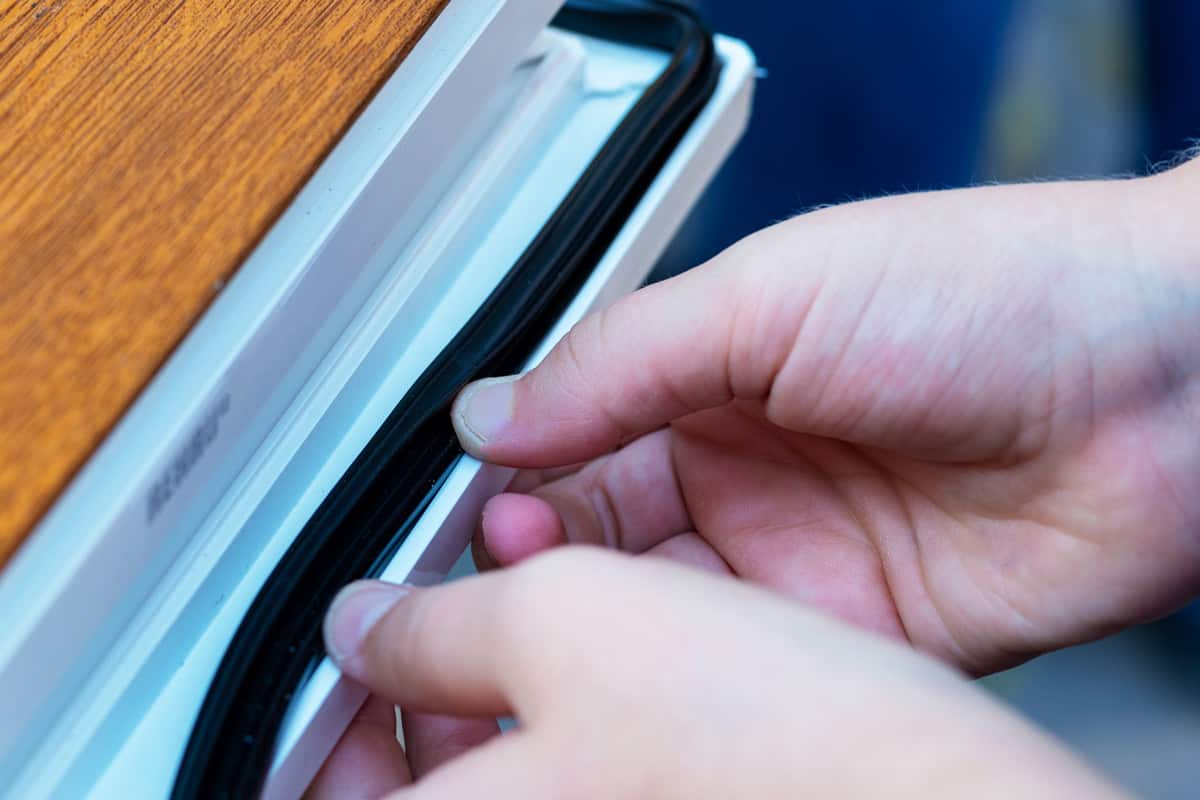
Does The Thickness Of A Weatherstripping Matter?
While you might think that the thickness of your weatherstripping is irrelevant, it's actually quite important. When you install your door, you want to ensure that it seals up tightly against the weather and the elements.
However, thicker is not always better. Thicker weatherstripping has the most material and it is able to keep out more cold air and moisture. The problem with thicker weatherstripping is that it also offers more resistance and requires more force to close a door or window.
The American Apartment Owners Association recommends that a weatherstrip foam should be half an inch thick, or should have the same thickness as the door stop.
What Is The Best Weatherstripping Material?

Vinyl is the ideal weatherproofing material when it comes to performance. It's a sturdy material that can withstand a wide range of temperatures and it also repels moisture better than metal weatherstripping, making it perfect for insulating doors and windows.
Vinyl can also easily match its look to the aesthetic of a modern home because of its universal appeal. However, it doesn't look good on old homes where metal weatherstripping has the advantage.
In Closing
Applying glue to a tape or strip is a waste of time. The only exception is if you are weatherstripping your door with rubber, which requires the use of a special weatherstripping glue.
A weatherstripping glue offers an easy way to apply weatherstripping to your door, and it will keep the weatherstripping in place until it wears out.
You might also like:
Can You Reuse Weather Stripping?
Can You Double Up Weather Stripping?




